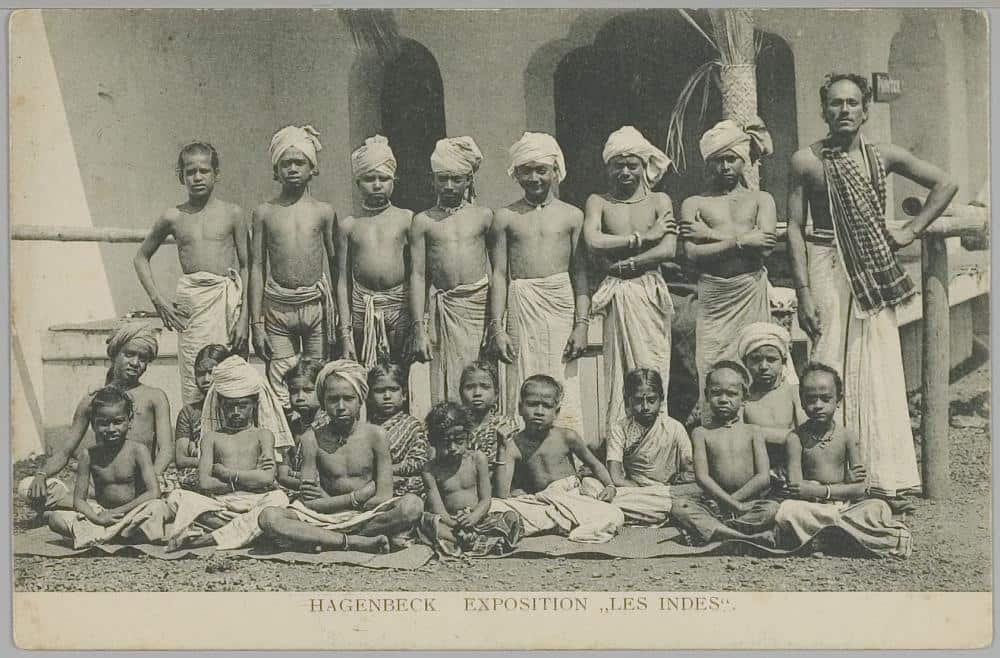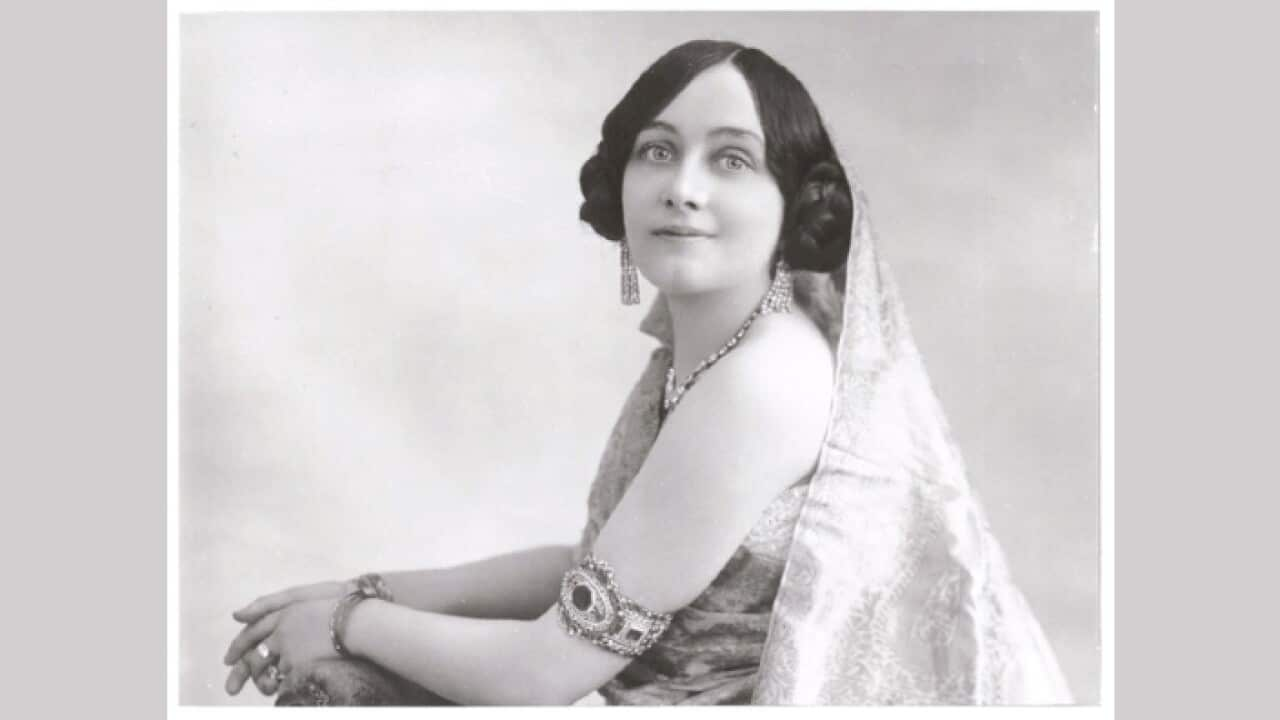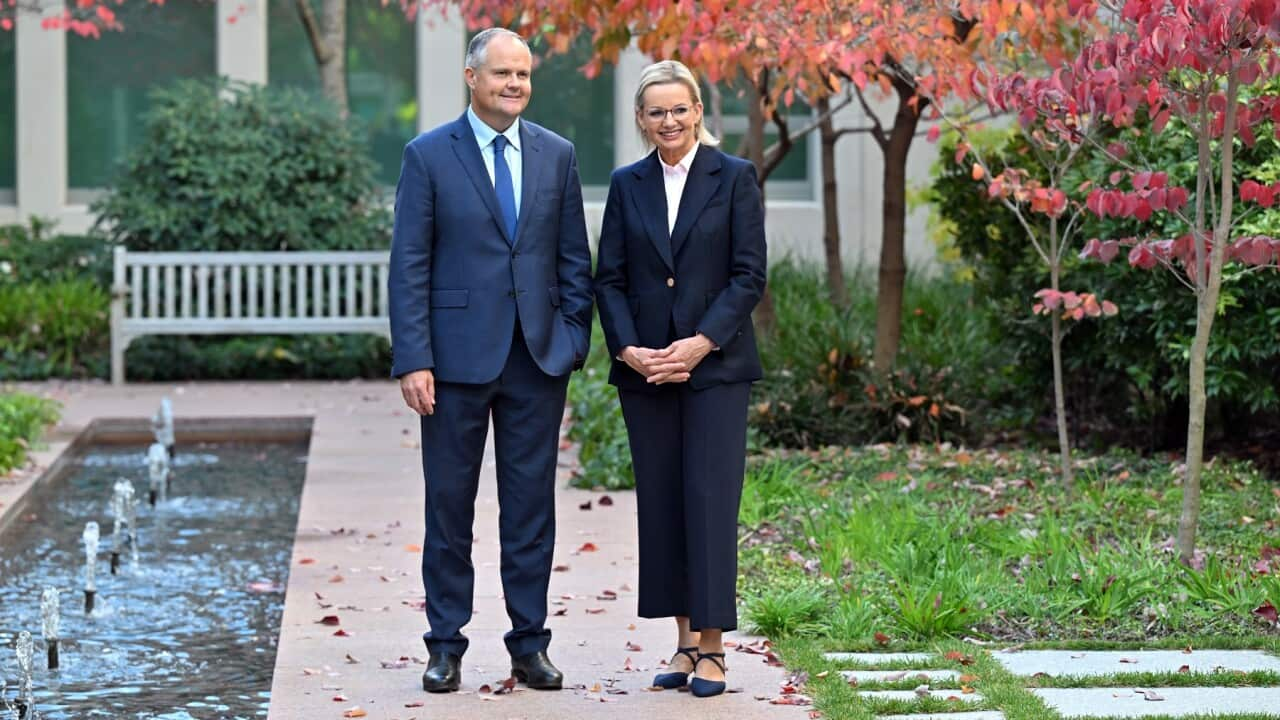"The term juggler became synonymous with Indian magic in the 19th century," writes John Zubrzycki in his book 'Enchantment: The Story of Indian Magic'.
The earliest Indian jugglers, acrobats and magicians came to Australia around 1863 with an American company called Rowe's American Circus.
The Gold Rush had attracted many performers to Australia, which had been witnessing a growth in population, disposable income and a longing for some form of entertainment.
So prominent were these performers from overseas that even the newspapers of that era reported on the Indian performing troupes who came down under with the American circus. Mr Zubrzycki, formerly a diplomat in India, recounts a most fascinating tale of two brothers from India who were jugglers - Mahomet Cassim and Mahomet Abdallah.
Mr Zubrzycki, formerly a diplomat in India, recounts a most fascinating tale of two brothers from India who were jugglers - Mahomet Cassim and Mahomet Abdallah.

Phonographs are representative. Source: Historical Picture Archive/CORBIS/Corbis via Getty Images
“First records available suggest Cassim and Abdallah came in 1860-61. They could have come with the Rowe's American Circus in 1853 and they could have stayed on, or another possibility is that they came to Australia with some Australian showbiz entrepreneur, a man called George Louis,” Mr Zubrzycki tells SBS Hindi.
"George Louis was the first person to set up a show in Calcutta in 1860. He made several trips to Calcutta for decades. One is not sure but there's a possibility Mr Louis brought Cassim and Abdallah to Australia. We have heard the duo performed for the first time in southern New South Wales (NSW) in the early 1860s and near Queanbeyan in 1861.
"They even acquired a manager called Madhoul, whose actual name was Caserotti. His father was a Sicilian and mother could have been a Bengali.
"Madhoul spoke enough Hindustani to befriend Cassim and Abdallah and offered to become their manager as they did not know English and to help them acquire shows or have playbills printed," Mr Zubrzycki says.

Photographs are representative. Source: Getty Images/clu
The Juggling of Fate
But fate had something else in store for these juggler brothers.
The story goes that the brothers, Cassim and Abdallah reported that their manager stole their savings of almost 100 pounds, a big amount in those days, along with their horses, leaving them penniless and without any means of transport.
But the brothers plodded along, pooling their meagre resources and performing at woolsheds and pubs.
“Cassim was an expert swordsman and that was his main act. His aim was so accurate that he could slice cucumber on Abdallah’s chest or slice an apple on his head with one swipe of his very sharp sword,” Mr Zubrzycki says.
The brothers also performed for other circuses and eventually made their way to Sydney.

Photographs are representative. Source: London Stereoscopic Company/Hulton Archive/Getty Images
Murder Most Foul
In 1863, a stockman who was searching for his lost cattle at Sawpit Gully in Southern NSW found a coat hanging from a branch of a tree.
In the pockets, there was a piece of chalk, two empty gold bags and a playbill of Cassim and Abdallah’s show.
The stockman informed the owner of the farm.
“Two days later they found the remains of a man, they were unsure how long it had been there. Dogs had torn at the flesh but they were human remains, including a skull, some bones, a shirt with a piece of human rib stuck to it. Obviously a murder case,” says Mr Zubrzycki.  John Zubrzycki adds that it was assumed that the body was of Madhoul the manager and Cassim and Abdallah had murdered him.
John Zubrzycki adds that it was assumed that the body was of Madhoul the manager and Cassim and Abdallah had murdered him.

Source: Supplied by John Zubrzycki
The brothers were tracked down to Liverpool where they were performing at the time and they were charged for murder.
Innocent or Guilty?
So were they acquitted or were they found guilty we ask John Zubrzycki.
“You’ve got to remember this is 1863… these are two Indians with very limited English!
"They did find an interpreter for them as they would have no understanding of the legal system. They, of course, professed their innocence but they were tough fighters. They were Indians and there was quite a bit of racial prejudice at that time,” Mr Zubrzycki explains.
The remains were never positively identified, they were too far gone and it was in days much before DNA sequencing.
"It was hard to tell if the body belonged to a Caucasian or Indian. Some hair suggested it might have been a South Asian but this was never conclusively proven. The case got wide coverage in the media and it became quite a sensational case and was known as the 'Sawpit Gully Murder'," Mr Zubrzycki says.

Photographs are representative Source: Fox Photos/Getty Images
Varied Public and Press Reactions
“The majority of the press sided with the police and the magistrate and prosecutor thought these two Indians were indeed guilty.
"But there were sections of the media that came to their defence, pointing out rightly that this was all very circumstantial, that the body had never been positively identified. It could have been there for a year, it could have been there for a few months.
One newspaper called The Empire, edited by Henry Parkes, came to their defence very strongly, suggesting that it was all circumstantial, it wasn’t just because the Indians did not understand the legal system and could not defend themselves.
"Cassim and Abdallah themselves pointed out that had they committed the murder why would they have left the playbills which could point towards them. They said the playbills were planted on the body to implicate them,” Mr Zubrzycki reveals.
“They were tried at the Magistrate’s Court in Goulburn and there was a prisoner in the jail at Goulburn who claimed that another prisoner had not necessarily confessed to the murder but had basically said that the two Indians were innocent.”
Guilty Verdict
It took an all-white jury less than three hours to find both men guilty of murder.
"Justice Wise of the Goulburn District Court, though known for his interest in the welfare of the working class and his philanthropy, showed no sympathy for the men," Mr Zubrzycki says.
Cassim was sentenced to death by hanging and he died on the gallows on May 27, 1863.
Abdallah was sentenced to hard labour. He fell very ill and was ultimately repatriated.
Little is known whether he reached India alive or what happened thereafter.

Photographs are representative. Source: Supplied by John Zubrzycki
Another Tale of Two Troupes
There were other troupes of Indian performers, too, who came to Australia and were treated fairly. They were brought to Australia by a theatrical entrepreneur called Harry Lyons.
These troupes included magicians, dancers, nautch (dance) girls and even children, and snake charmers from India.
In 1880, there was an Afghan Museum and Oriental Living Wonders show. This show included an Indian ventriloquist who could imitate sounds of birds and bees and reptiles.
The show was very popular in Victoria, New South Wales and South Australia.
Mutiny by Indian Jugglers in Melbourne
A troupe brought to Australia in 1889 by Charles Bastard suffered horrific mistreatment.
This troupe included a five-legged cow, jugglers and two lepers who were nicknamed monkey boys, an extremely derogatory term.
“This troupe was terribly mistreated. They were housed in terrible conditions. There were more than a dozen of them including women and children. In November 1889, they staged a mutiny in Melbourne, demanding their wages, demanding they be repatriated to India. So the first mutiny on Australian soil was by a troupe of Indian jugglers.” Mr Zubrzycki concludes. The plight of these jugglers was widely covered by the press and they were supported by a few local Indians who were in Australia at that time.
The plight of these jugglers was widely covered by the press and they were supported by a few local Indians who were in Australia at that time.

Group of Jugglers, Madras, Nicholas and Curths, 1870. British Library **Photographs are representative** Source: Supplied by John Zubrzycki
In the Journal of the European Association for Studies of Australia, Mr Zubrzycki writes about the Indian Jugglers, "Melbourne's local Indian community rallied to their defence and the Victorian Government was forced to repatriate the troupe.
The case would eventually lead to a review of laws covering the emigration of 'spectacular performers' from India."
More in this series:

How Indian servants brought to Australia lived and survived in the 19th century







